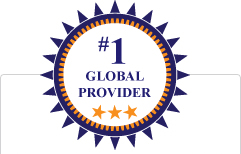...
How would you like to be a Guest Blogger for KMI? Email us at: info@kminstitute.org and let us know your topic(s)!
Are you Knowledge-Mapping your Organization's Knowledge Yet?
 The process of visually representing the intellectual assets, knowledge flows, and relationships within an organization or a specific domain is knowledge mapping. It is an integral component of any successful knowledge management framework and is used by knowledge managers as a strategic tool to visualize, organize, and understand an organization’s knowledge assets.
The process of visually representing the intellectual assets, knowledge flows, and relationships within an organization or a specific domain is knowledge mapping. It is an integral component of any successful knowledge management framework and is used by knowledge managers as a strategic tool to visualize, organize, and understand an organization’s knowledge assets.
The knowledge mapping process involves creating a structured framework of the organization’s knowledge – identified, organized, and categorized in the form of graphs, metrics, diagrams, or charts for better understanding and utilization of existing knowledge and knowledge gaps to foster innovation and growth of employees and organization as a whole.
Now let’s discuss more about the practical role of how knowledge mapping works towards strengthening the overall KM program.
- Knowledge mapping helps better understand what knowledge sources exist (both explicit and tacit) in the organization, where they reside, and where the gaps exist. A better understanding of current sources and gaps paves an easy way for the better utilization of knowledge sources and upskilling to fill the gaps for better employee performance and outcomes.
- The lowest-hanging fruit of knowledge mapping is enhanced collaboration leading to a ready exchange of knowledge (especially tacit), ideas, skills, learnings, and best practices by mapping knowledge flows and networks by identifying experts, communities of practice, and knowledge hubs, fostering a culture of knowledge sharing and collaboration.
- By mapping knowledge flows, organizations can better understand the movement of knowledge across different departments, teams, and individuals. This visualization helps in identifying bottlenecks, gaps, and opportunities for improving knowledge sharing and collaboration for improving overall skills and efficiency.
- Knowledge mapping can help organizations identify knowledge and skills gaps, dependencies against the demand, and critical knowledge areas for better decision-making when it comes to learning and talent development.
- Knowledge maps further highlight areas of expertise and skills within the organization. By identifying experts and knowledge holders, organizations can facilitate knowledge transfer, mentorship, and talent development initiatives.
- Knowledge mapping helps design a structured inventory of existing knowledge resources. It helps in identifying valuable intellectual property, managing intellectual capital, and mitigating the risk of knowledge loss due to employee movement or retirement.
Knowledge mapping plays a critical role in fostering innovation by enabling knowledge managers to visualize knowledge assets and flows. This can help KM managers work with the department leads to streamline processes, reduce redundancy, and identify opportunities for innovation, thus enabling the organizations to leverage their intellectual resources more efficiently and effectively for staying successful in the very competitive and agile business landscape.
 Ekta Sachania has over 15 years of experience in learning and talent development disciplines, including knowledge management, content management, and learning & collaboration with expertise in content harvesting, practice enablement, metrics analysis, site management, collaboration activities, communications strategy and market trends analysis. Demonstrated success in managing multiple stakeholder expectations across time zones and exhibiting good project management skills, by successfully developing and deploying projects for large audiences. Ability to adapt and work in emerging areas with fast-shifting priorities. Connect with Ekta at LinkedIn...
Ekta Sachania has over 15 years of experience in learning and talent development disciplines, including knowledge management, content management, and learning & collaboration with expertise in content harvesting, practice enablement, metrics analysis, site management, collaboration activities, communications strategy and market trends analysis. Demonstrated success in managing multiple stakeholder expectations across time zones and exhibiting good project management skills, by successfully developing and deploying projects for large audiences. Ability to adapt and work in emerging areas with fast-shifting priorities. Connect with Ekta at LinkedIn...
Other Featured Blogs by Ekta:
Archives
- January 2022 (4)
- December 2021 (4)
- November 2021 (2)
- October 2021 (3)
- September 2021 (2)
- August 2021 (3)
- July 2021 (2)
- June 2021 (5)
- May 2021 (6)
- April 2021 (10)
Pages
RECENT POSTS
...












 ...
...
